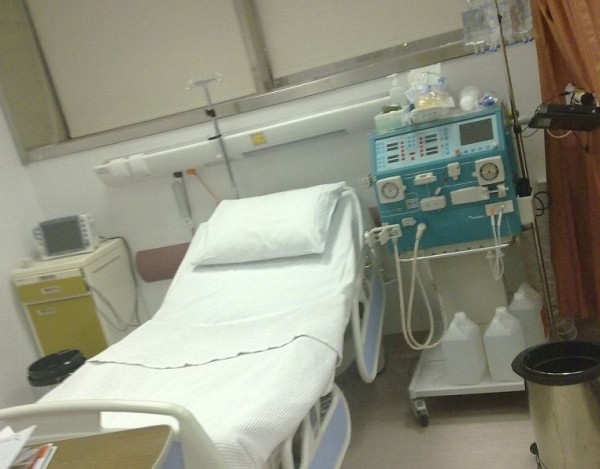A Johns Hopkins study has affirmed the success of living kidney "paired donation" (KPD) as a means of efficiently finding more kidney donors who are a match for patients in need.
In the study, published in the Oct. 5 issue of The Journal of the American Medical Association, Hopkins surgeons report successfully performing KPD transplants on 21 out of 22 kidney patients whose willing donors were incompatible by matching them up with other incompatible pairs. Robert Montgomery, M.D., Ph.D., the director of the Comprehensive Transplant Center at Hopkins and lead researcher in the study, said the results could pave the way to a national matching registry that would enable hundreds and perhaps thousands of patients who cannot receive a kidney from a loved one to be transplanted by exchanging donors with a stranger.
"This is especially important," Montgomery said, "because it offers hope to patients who have compatibility issues that make it difficult for them to find suitable donors."
KPD is a process in which living incompatible donor-recipient pairs are matched with other living incompatible donor-recipient pairs in order to find successful matches. For example, an incompatible donor-recipient pair with blood types A and B, respectively, might be successfully matched with a donor-recipient pair who has the opposite incompatibility --- blood types B and A. The kidneys would be exchanged between the two pairs so that the A recipient then would receive an A kidney and the B recipient a B kidney.
Montgomery, an associate professor at Hopkins, said KPD is also effective with patients who have tissue incompatibilities. Tissue incompatibility can occur when a patient --- who has either been pregnant or had a blood transfusion or a previous transplant --- mounts an immune response against the foreign tissue. The condition, called HLA antigen sensitization, can cause a kidney to be rejected and make patients incompatible with donors who share their tissue type. As a result, donor matches are more difficult to find.
Continue Reading Below ↓↓↓
"This study shows that KPD can be done with high degree of success and should be adopted widely with the help of a national KPD list," Montgomery said. "If you increase the pool of donor-recipient pairs, you increase the number of possible matches."
The study, conducted at Hopkins from June 2001 to November 2004, involved kidney transplants performed on 22 recipients referred to Hopkins from all over the United States. Twenty-one of the transplants were successful. One transplant was unsuccessful because the kidney failed.
There are 63,275 patients in United States waiting for kidney transplants. In many parts of the country, patients wait three to five years for a deceased donor organ. Over the past decade, the number of live donors has tripled, making it now the most common source of kidneys for transplantation. Tissue and blood type incompatibilities remain the most significant barrier to further expansion of live donation.
There is a national network already in place that matches deceased-donor kidneys with compatible recipients.
"A similar system now needs to be in place for living donors," Montgomery said.
A matching system for living donors is essential since about 36 percent of living donor-recipient pairs will likely be blood-type incompatible, and about 30 percent of the patients currently on the kidney recipient list have HLA antigen sensitization, Montgomery said.
Montgomery said there are roughly 2,000 to 3,500 patients in the United States who have living incompatible donors. With KPD, about half of those patients could find a compatible match.
"The only significant gains in finding available kidneys for these patients are likely to come from KPD," Montgomery said.
Live-donor transplants have distinct advantages over deceased-donor transplants, according to Montgomery. Aside from circumventing the long waiting period for deceased-donor kidneys, live-donor kidneys generally last twice as long and work immediately. Kidneys procured from deceased donors can take days or weeks to start functioning normally, which means longer hospital stays. Finally, it is less expensive to use a live donor. With deceased-donor kidney transplants, there are costly acquisition fees related to identification, management and shipping of the kidney, as well as the cost of the additional hospitalization, Montgomery said.
The Johns Hopkins' Comprehensive Transplant Center has had a KPD program since 2001. In August 2003, Johns Hopkins surgeons performed the world's first "triple swap" kidney transplant operation, transplanting the kidneys from three donor and recipient pairs simultaneously.
Continue Reading Below ↓↓↓
Other investigators involved in the study, conducted solely at Hopkins, were Daniel S. Warren, Andrea A. Zachary, Lloyd E. Ratner, Dorry L. Segev, Janet M. Hiller, Julie Houp, Mathew Cooper, Louis Kavoussi, Thomas Jarrett, James Burdick, Warren R. Maley, J. Keith Melancon, Tomasz Kozlowski, Christopher E. Simpkins, Melissa Phillips, Amol Desai, Vanessa Collins, Brigitte Reeb, Edward Kraus, Hamid Rabb and Mary S. Leffell.
Source: Johns Hopkins Medical Institutions









